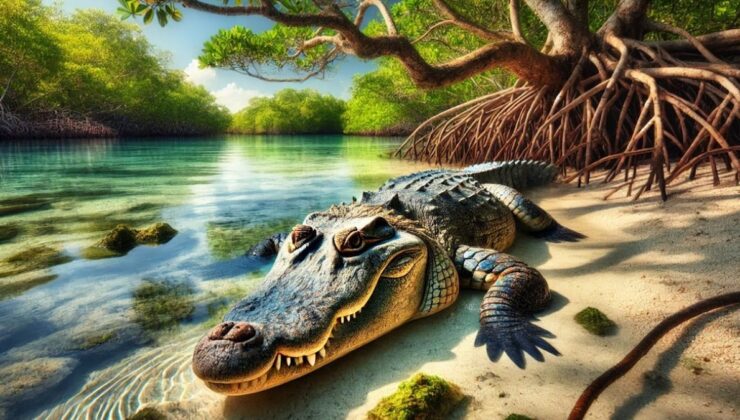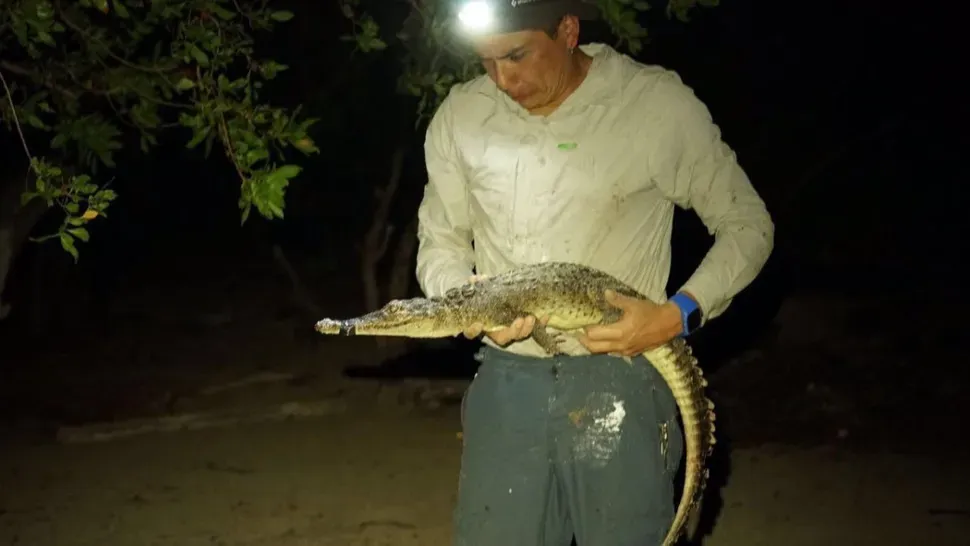



The fascinating world of crocodiles has revealed an unexpected twist. Recent research led by José Avila-Cervantes from McGill University has identified two distinct species previously thought to be a single entity, Crocodylus acutus. These newly recognized species are located in Cozumel and Banco Chinchorro, regions in Mexico’s Pacific coast and the Caribbean, respectively.

The initial findings of this groundbreaking study were shared online on March 28, with a comprehensive version to be published in the journal Molecular Phylogenetics and Evolution in June. José Avila-Cervantes remarked, “These results were completely unexpected,” indicating the surprise at discovering more diversity within what was assumed to be a single species ranging from Baja California to Venezuela.
The researchers embarked on an extensive study of crocodile populations, capturing specimens to gather blood and tissue samples for in-depth genetic analysis. They also examined physical characteristics, comparing them with data from earlier studies. The major physical distinction noted was the snout’s dimensions and shape; Banco Chinchorro crocodiles boast a longer and wider snout compared to their Cozumel counterparts.
This discovery bears significant implications for conservation efforts. Both populations are under threat due to human activities like urbanization, pollution, and tourism. Despite the current stability of these populations, their small numbers and restricted habitats render them vulnerable. Hans Larsson, a biology professor at McGill University, emphasized the necessity of safeguarding these habitats. He stated, “Now that we recognize these crocodiles as separate species, it is crucial to protect their habitat,” advocating for restricted land development and meticulous conservation strategies in Cozumel and Banco Chinchorro.
SİGORTA
4 gün önceSİGORTA
5 gün önceENGLİSH
14 gün önceSİGORTA
14 gün önceSİGORTA
14 gün önceSİGORTA
18 gün önceSİGORTA
19 gün önce 1
Elon Musk’s Father: “Admiring Putin is Only Natural”
11779 kez okundu
1
Elon Musk’s Father: “Admiring Putin is Only Natural”
11779 kez okundu
 2
7 Essential Foods for Optimal Brain Health
11759 kez okundu
2
7 Essential Foods for Optimal Brain Health
11759 kez okundu
 3
xAI’s Grok Chatbot Introduces Memory Feature to Rival ChatGPT and Google Gemini
11505 kez okundu
3
xAI’s Grok Chatbot Introduces Memory Feature to Rival ChatGPT and Google Gemini
11505 kez okundu
 4
DJI Mini 5: A Leap Forward in Drone Technology
10412 kez okundu
4
DJI Mini 5: A Leap Forward in Drone Technology
10412 kez okundu
 5
Minnesota’s Proposed Lifeline Auto Insurance Program
9704 kez okundu
5
Minnesota’s Proposed Lifeline Auto Insurance Program
9704 kez okundu